
GPS : 48°31'41.5 N 4°45'32.2 W
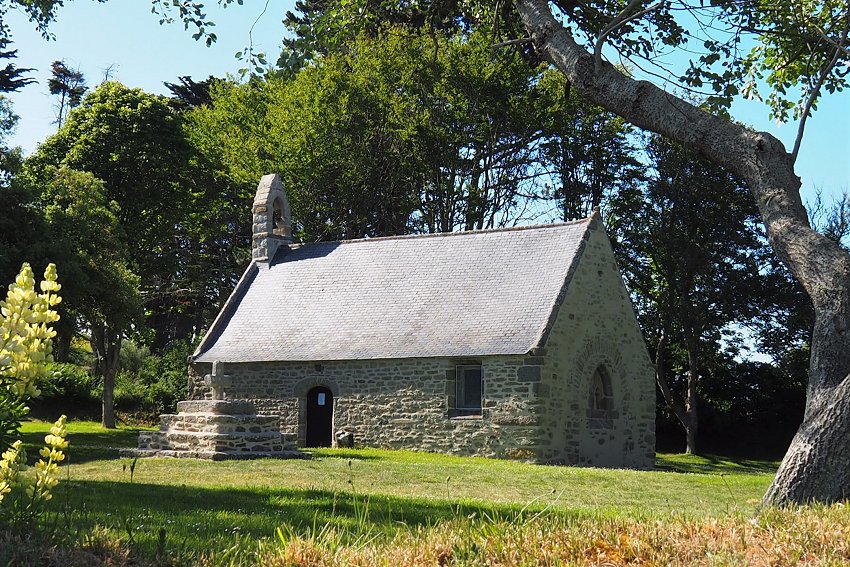
© Photo ASCL
Access :
Leave St-Renan on the D68 road towards Argenton and continue straight. Turn right in front of the harbor towards Landunvez. After 800 m, turn left onto a small road signposted towards the St-Gonvel chapel. Then keep to the right and turn left onto the small road called Hent Sant Gonvel. The chapel appears on the right in the centre of a large grassy enclosure. Park near the entrance of the pen.
This little chapel, a little way off the main road, didn't attract many visitors. This lack of interest was no doubt due to the fact that it had been closed for major restoration work in recent years. These have now been completed, and the building is well worth a visit.
It is named after Saint Gonvel, a Breton saint who, like many others, is not recognized by the Church. No document even attests to its existence. However, we can think that it is the same character as the one who is still venerated under the name of Saint Gonval or Conval in Hanvec, south of Brest. A chapel, now disappeared, was built in the forest of Cranou. This hermit from the Early Middle Ages also lived in the Bois du Gars in L'Hôpital-Camfrout. In the Iroise's country, you can see his name in the one of the town of Plougonvelin. If it is the same saint, we could explain his veneration to Landunvez by imagining that, coming from across the Channel like many other monks, he would have landed on the neighbouring coast. And he would have chosen the dolmen that now bears his name as a place of hermitage.
A truncated chapel:
With a rectangular plan, the Saint Gonvel chapel has a blind bell tower wall. At the top, the old bell tower, which remained empty for decades, has recently been restored.
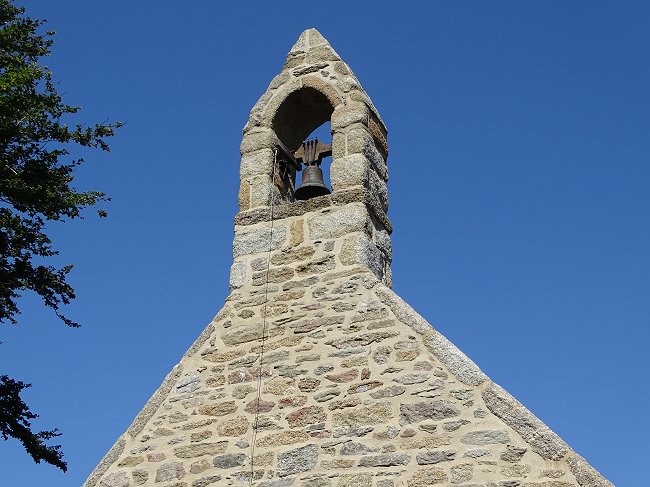
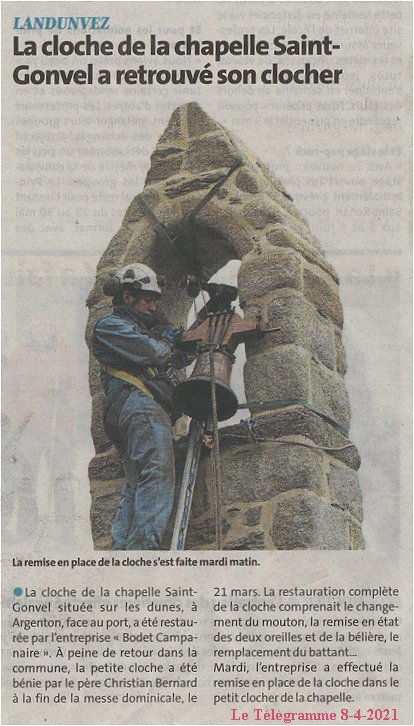
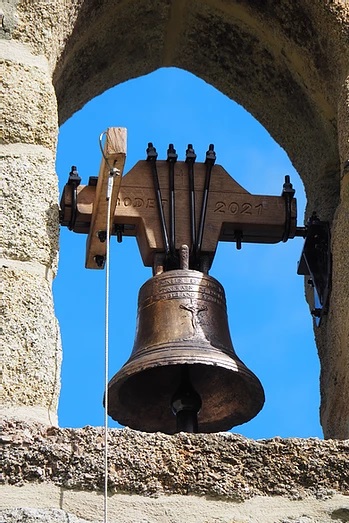
Made in the middle of the 19th century, it bears the following inscription:
FAITE EN 1844 POUR LA CHAPELLE DE S GONVEL - PARRAIN M POULLAOUEC MAIRE - ROLLAND RECTEUR - MARRAINE M PRVOST NEE SCANFF ( MADE IN 1844 FOR THE CHAPEL OF S GONVEL - GODFATHER M POULLAOUEC MAYOR - ROLLAND RECTOR - GODMOTHER M PRVOST MAIDEN NAME SCANFF )
The bell's godmother, whose name is incorrectly othographied, was Marie-Françoise Provost, née Le Scanff, wife of Yves-François Provost, port master in Landerneau.
Further on, we read: VIEL , the name of the founder who was also responsible for the bells in the Kersaint chapel.
At the other end of the building, one can see the trace of a large Gothic arch whose interior has been walled up.
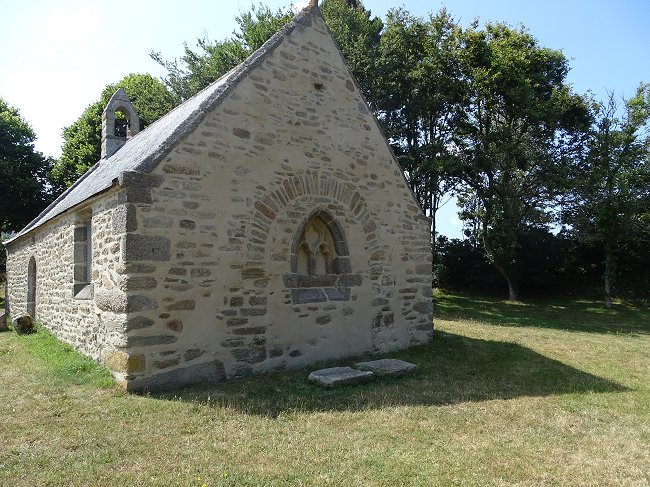
This obturation is not recent, as it shelters the medieval remains of another, smaller opening with a three-lobed arch, also blind. The large stone arch above it is not an old window since it goes all the way to the ground.
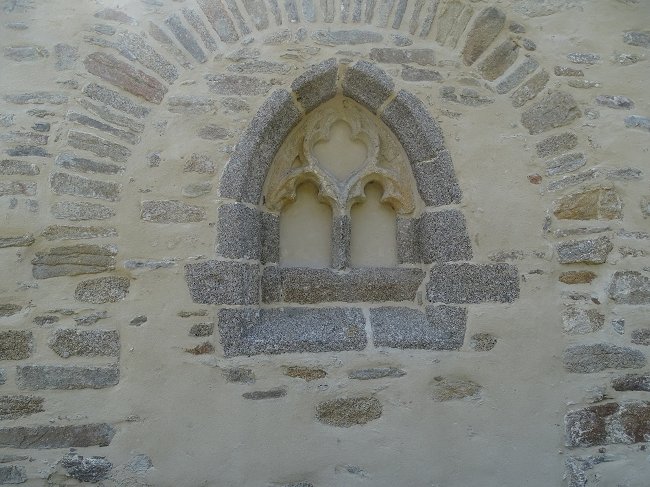
It was therefore originally either the main entrance to the building, or inside the building a diaphragm arch that allowed access to a part of the chapel that had disappeared.
The first hypothesis would place the altar to the west, along the bell tower wall. It is therefore unlikely, as the altar is always placed in the east except in cases of force majeure.
This suggests that the building has been truncated. And the architecture of the small window would take these works back to around the 16th century. The installation of an altarpiece is undoubtedly the reason why this opening was walled up.
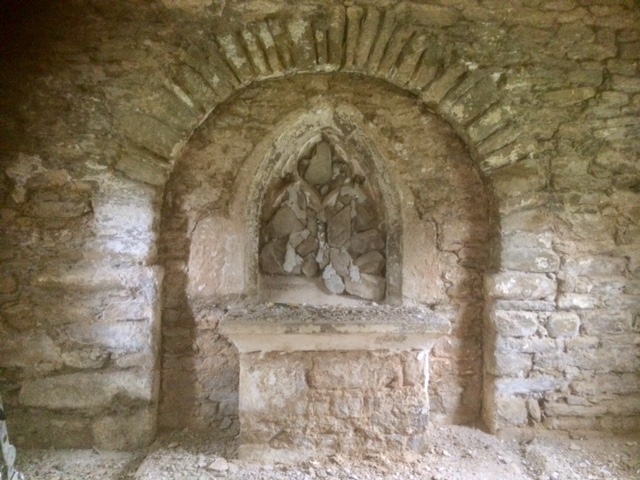
When, inside the building, the altarpiece was removed for restoration,
the old diaphragm arch became clearly visible
© Photo A. du Chéné
The entrance to the building is located on the south side of the building, between two pieces of Gallic stelae that may have supported crosses. In the same commune, further north, near the chapel of Saint-Samson, a Christianized stele bears an engraved inscription: TP ST GONVEL 1757. These small Iron Age monuments have often been moved.
Above the door, in a niche, an enigmatic head awaits the visitor.
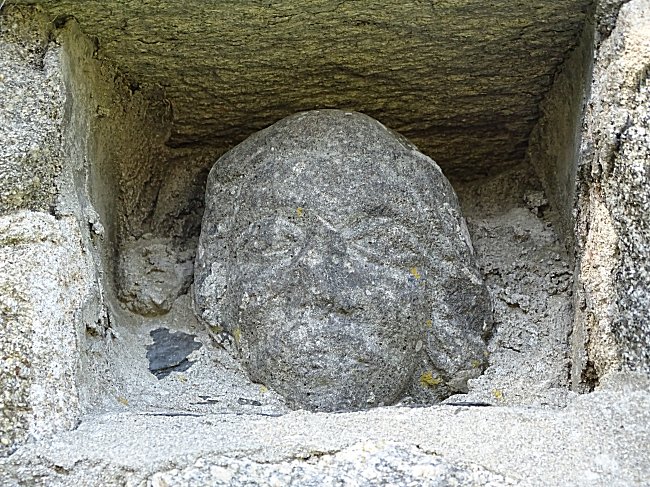
Photo YL October 2018
Its state of erosion indicates that it has long been exposed to the elements. It could therefore have come from a mutilated statue whose location is unknown.
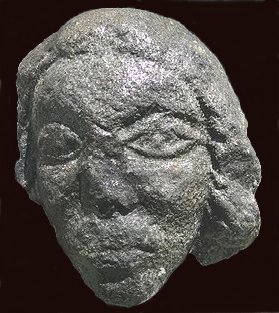
The same sculpture after cleaning
© Photo A. du Chéné
Inside :
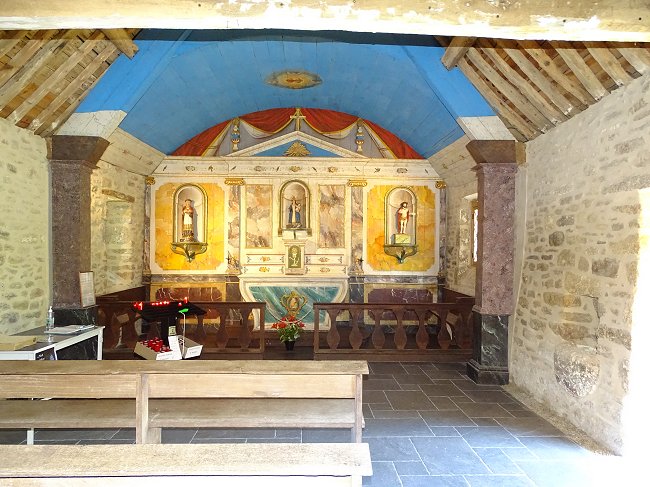
To the right of the entrance, a recessed font awaits the visitor.
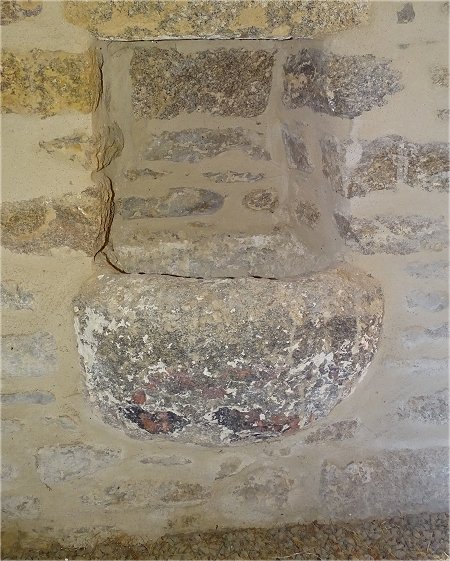
The framework beams are still visible, while in the background hangs the model of the Argenton tuna boat Kers atao donated to the chapel in 2022.
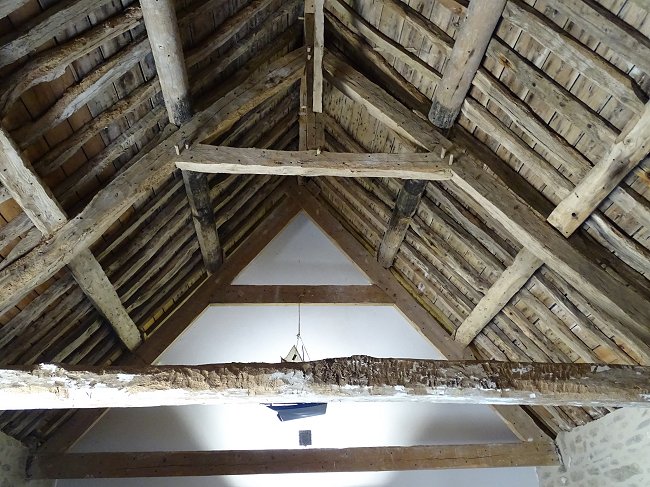
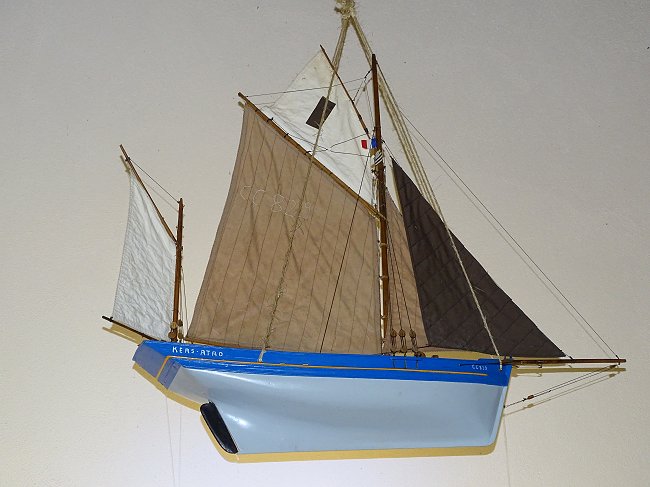
Hiding the entire gable wall and its diaphragm arch, the current altarpiece is a remarkable work of art, a gigantic trompe-l'œil painting on colorful woodwork that creates a pleasant, playful atmosphere.
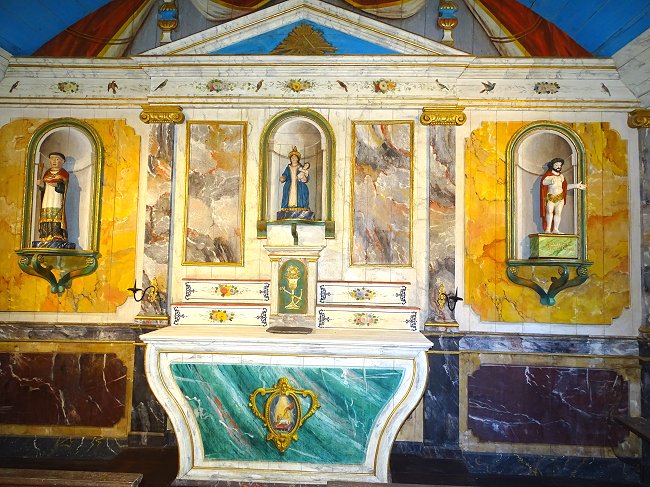
At the very top, at the level of a barrel vault panelled and coloured in bright blue, there is a theatre curtain raised in the Italian style around a central cross. Supported by two coloured pilasters, it opens onto a wide pediment in a classic style.
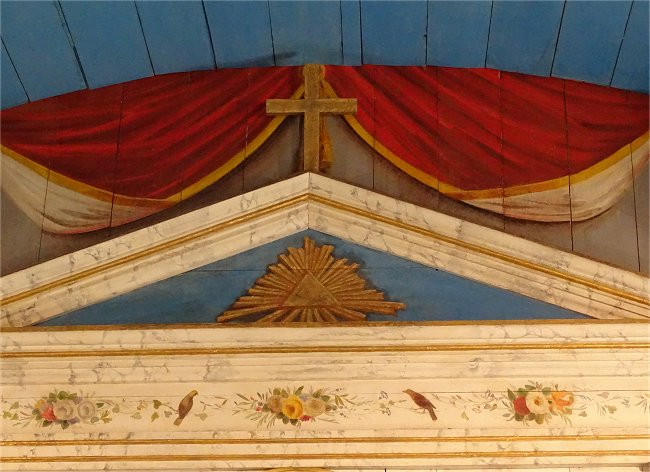

The pediment surmounts a bucolic frieze composed of floral garlands and birds.
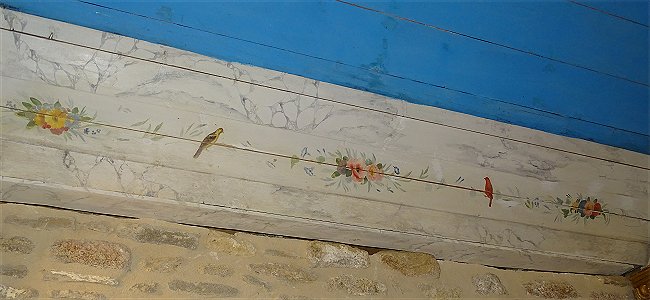
False marble, trompe-l'oeil niches, we are immersed in a completely fashionable reconstruction at the beginning of Romanticism.
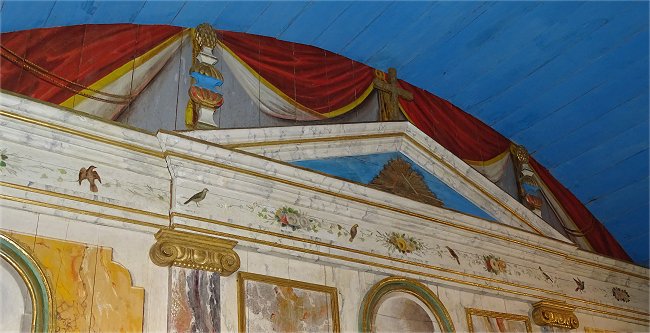
In front of the painted niches, three statuettes rest on a support.
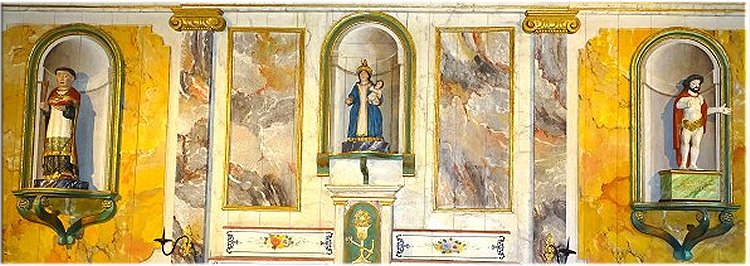
They represent Saint Gonvel as a monk, a Virgin and Child and a Christ showing his wounds to Saint Thomas. These statues have long been housed in the town church and the chapel of Kersaint.
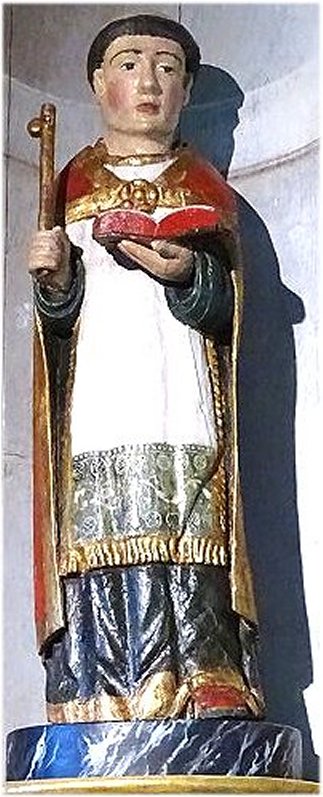
|
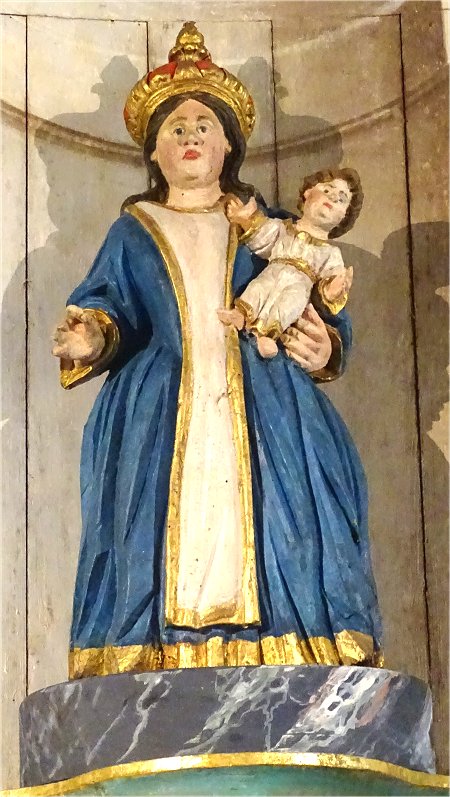
|
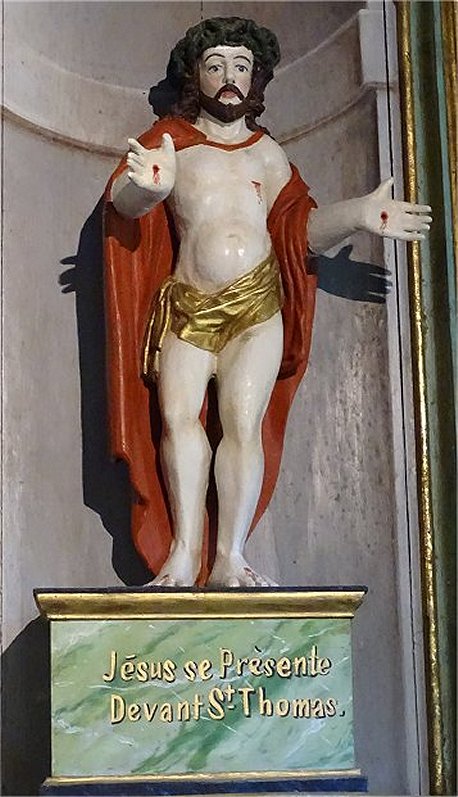
The curved tomb altar is also painted.
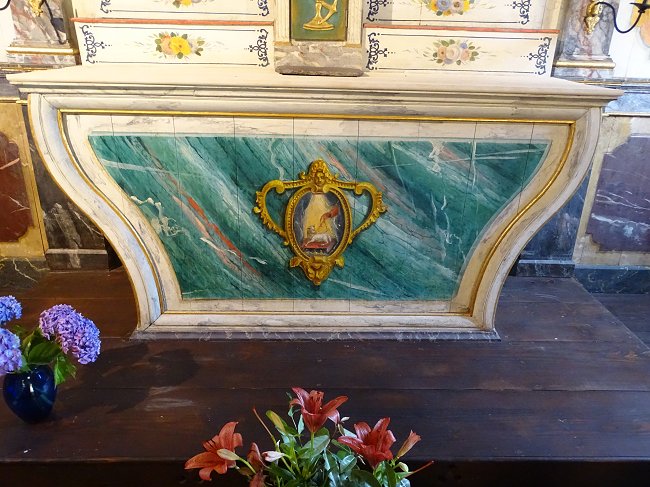
The Kersaint chapel features an identical high altar and the same floral decorations.
And on the ceiling are the angelic faces of a whole family around two hearts encircled by a crown of thorns.
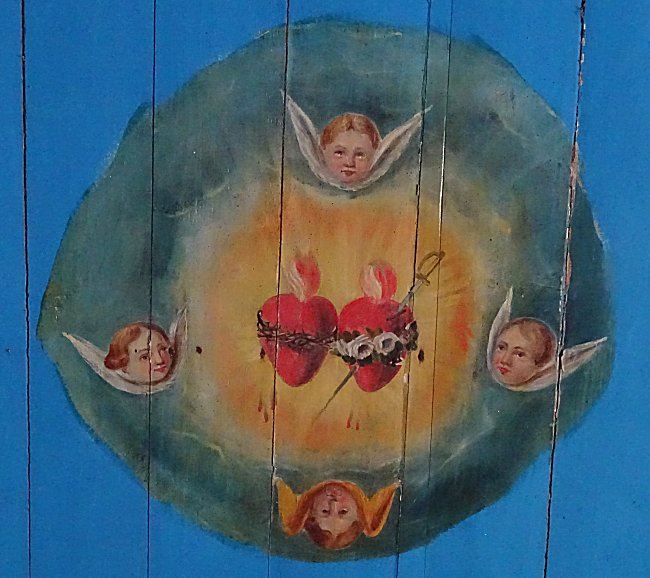
This work is an enigma for many visitors. A surfer, whom we would like to thank here, shared her explanation with us :
It could be a representation, very common in the 19th century ( if the painting dates back to that time ), of the Sacred Heart of Jesus as it illustrates the feast of the same name instituted by the Church in 1856.
This feast, celebrated on the 3rd Friday after Pentecost, has its origins in the 17th-century apparitions of Jesus to Saint Marguerite-Marie Alacoque, a nun at the Visitation convent in Paray-Le-Monial. Devotion to the Sacred Heart was very strong at the end of the 19th century and led to the construction of basilicas bearing this name ( Paris, Marseille… ).
The Sacred Heart of Jesus is represented surmounted by a cross and surrounded by a crown of thorns. It is often depicted coupled with the Immaculate Heart of Mary which is celebrated by the Church on the Saturday following the feast of the Sacred Heart of Jesus. The crown of roses is one of the emblems of Mary (hence the Rosary) and we can think that the pierced heart is an illustration of the Gospel of Saint Luke "and you yourself a sword will pierce your soul" (Luke 2, 35)
(Luke 2, 35). Elisabeth Bernard-Bordes
The chapel thus bears the traces of an evolution that extends over several centuries. We will see that on the outside we go back even further in the past.
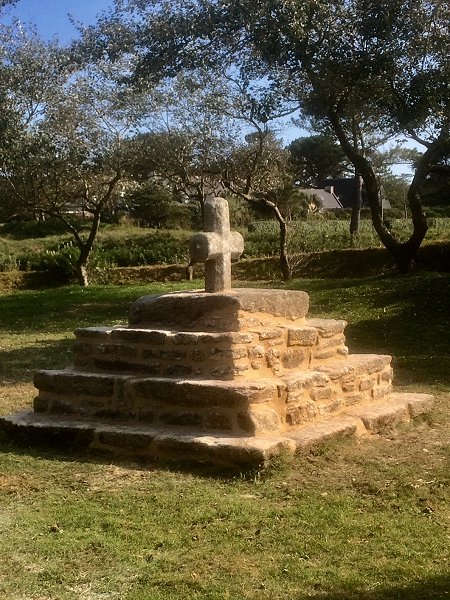
© Photo A. du Chéné
The monumental calvary, in steps, similar to that of Saint-Mathieu Headland, probably dates back to the Middle Ages. He sits in the middle of this space, which is none other than the old cemetery surrounding the chapel. This building truncated in the 16th century, was probably preceded by an even older building.
But that's not all : let's look at the southeast corner of the building.
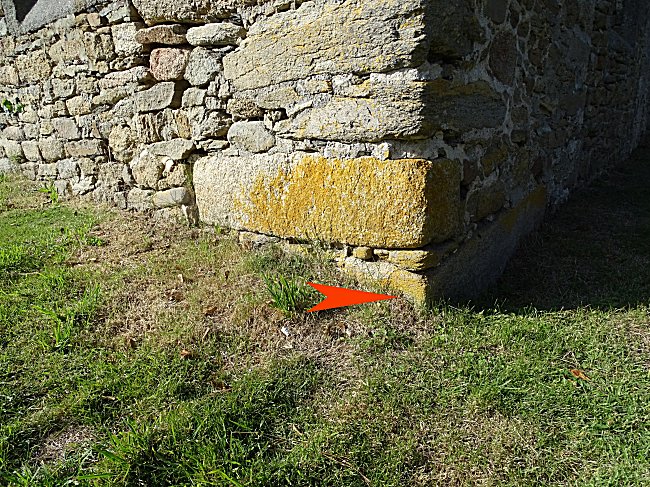
Two long stones are arranged at the base of this corner. The one below is a Gallic stele. If we take the trouble to observe it closely, we can even see engravings.
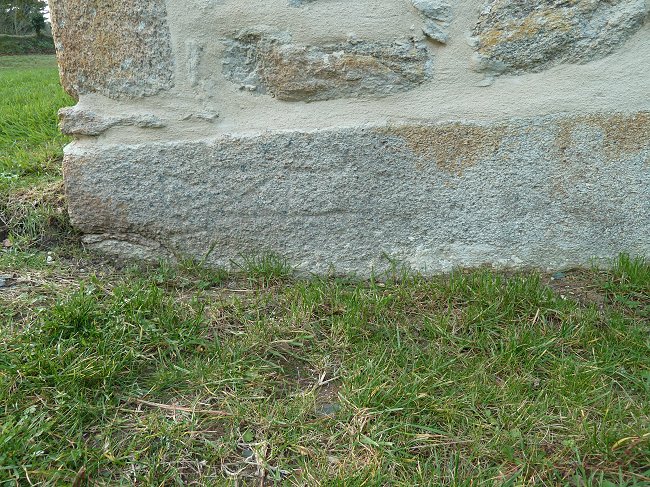
The reuse of a pagan stele as the cornerstone of a chapel is not at all by chance. It reflects the desire to Christianize an ancestral place of worship. More details on this stele can be found in the archaeological remains section of this website.
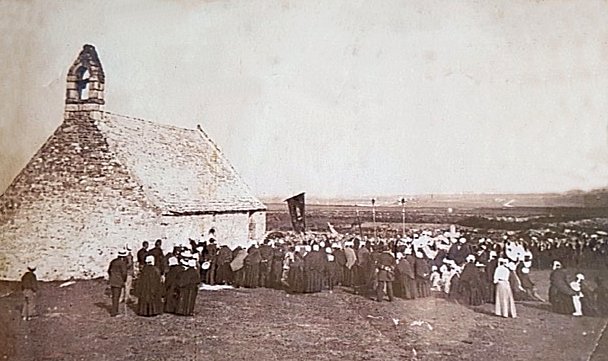
Religious festival at St. Gonvel's Chapel in 1903
***
READ MORE
Do not miss to visit the site of
the Association for the Safeguarding of the Landunvez Chapels The opening hours of these buildings are indicated.
Landunvez, Saint Gonvel, a truncated chapel
by Yves-Pascal CASTEL. Article published in Le Courrier du Léon et du Tréguier dated 16 March 1991.
The legend of Saint Gonval
by Léontine DRAPIER-CADEC. Published in Les Cahiers de l'Iroise n°26 April-June 1960.
|




 Calling users :
Calling users : 